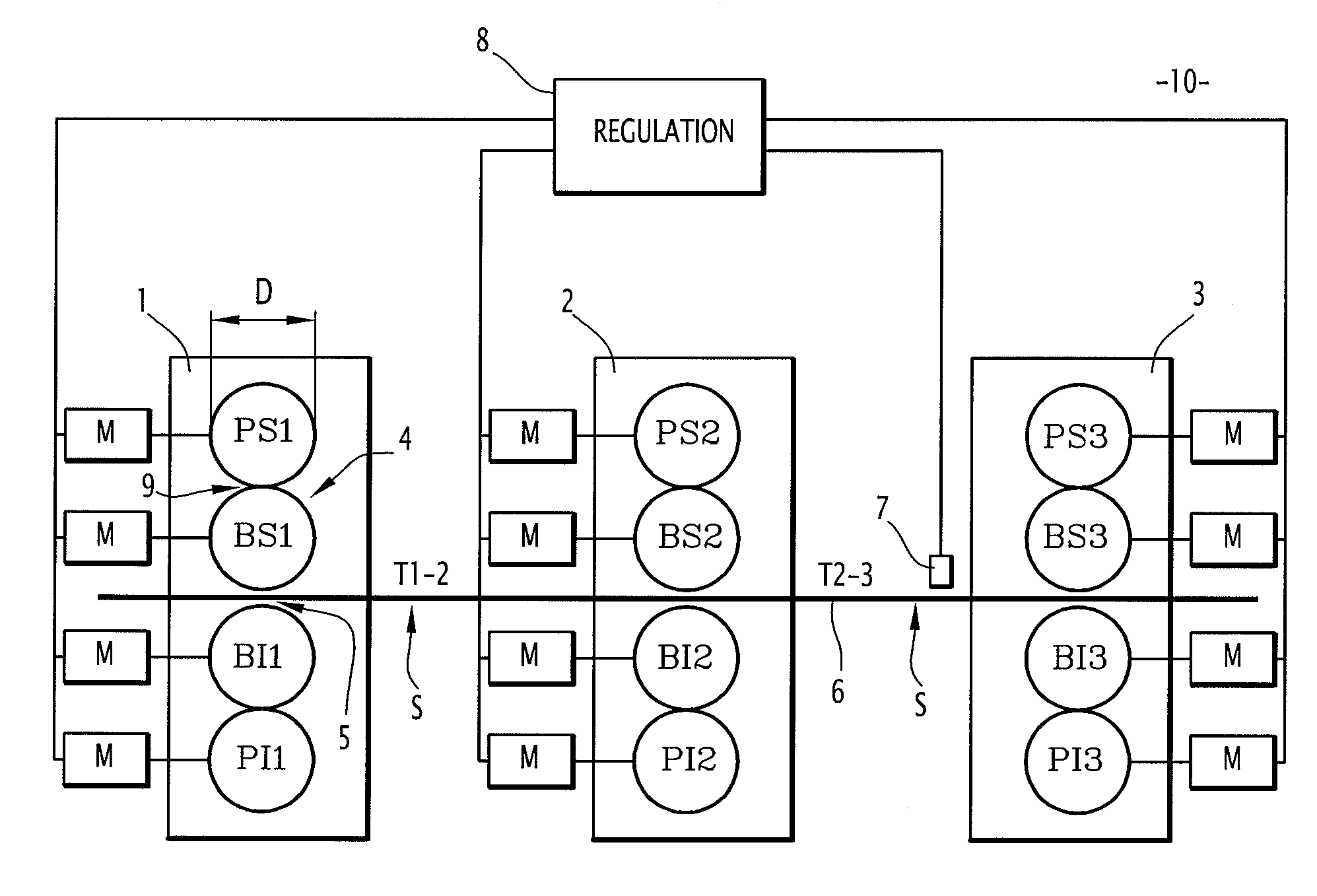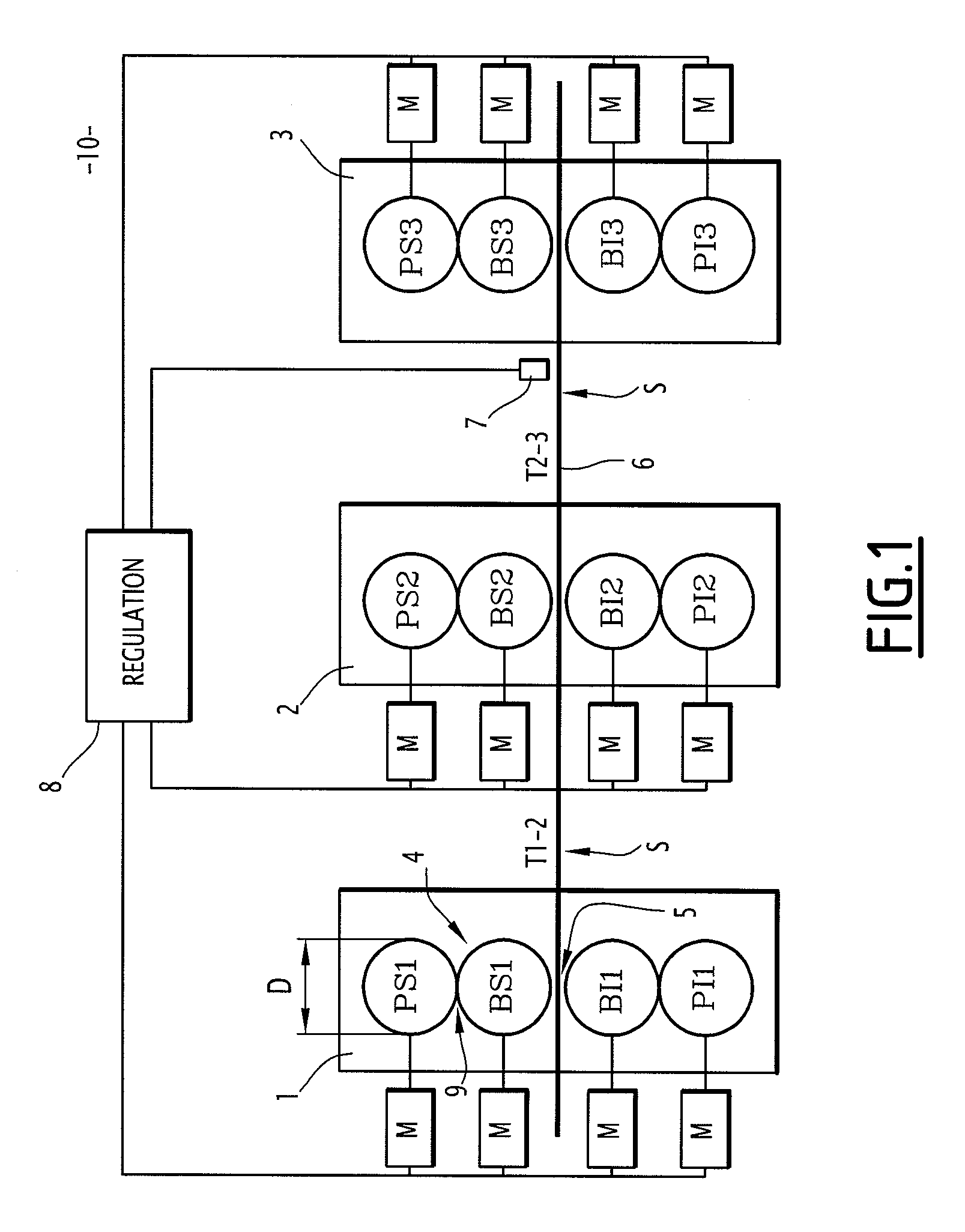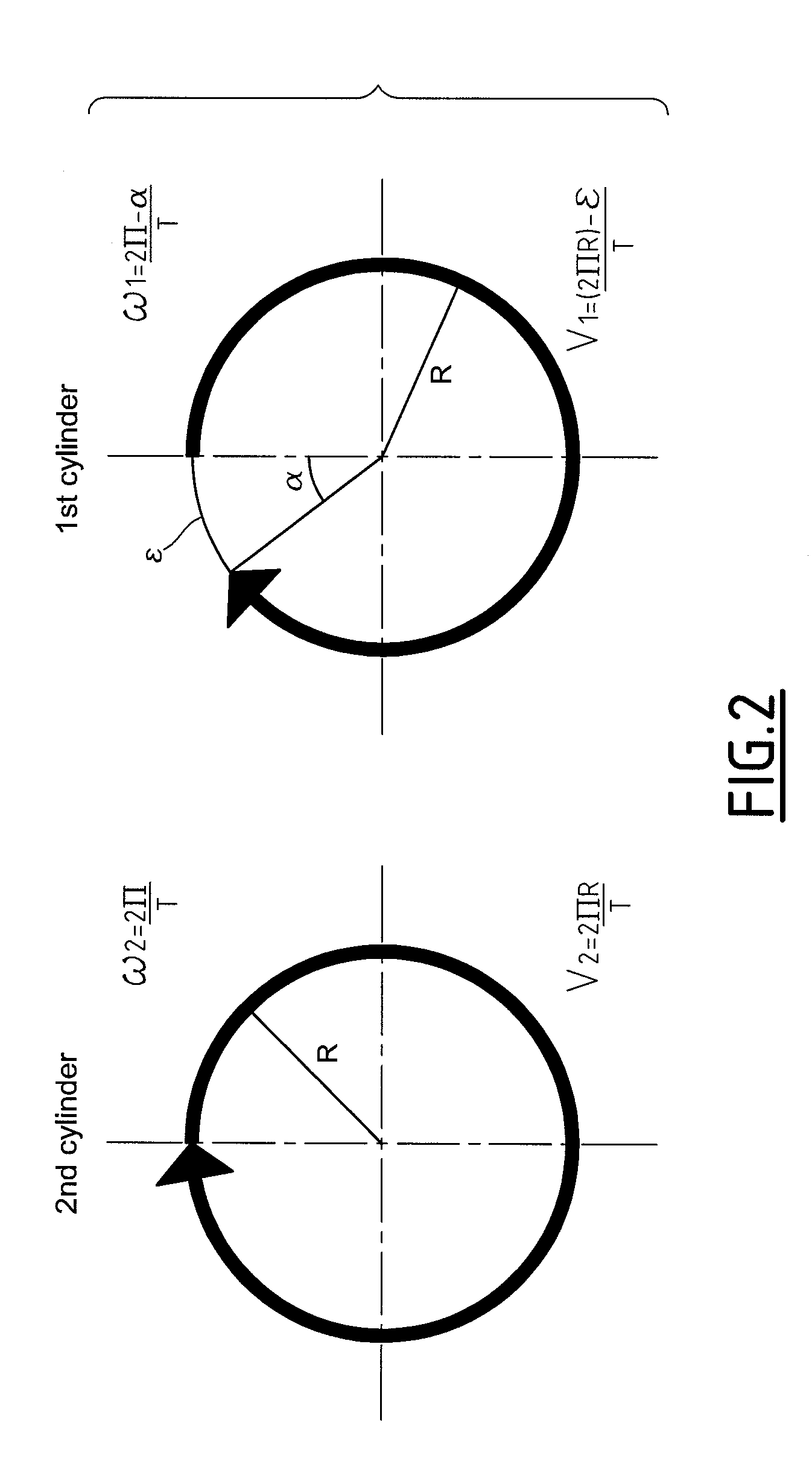Method for Regulating the Angular Velocity of Printing Cylinders
a technology of angular velocity and printing cylinder, which is applied in the direction of speed regulation of multiple dynamo-electric motors, dynamo-electric machines, and dynamo-motor starters. it can solve the problems of poor superposition of images printed by the various printing units in the direction, laborious and inflexible mounting operation, and varies the feed coefficient of blankets
- Summary
- Abstract
- Description
- Claims
- Application Information
AI Technical Summary
Benefits of technology
Problems solved by technology
Method used
Image
Examples
first embodiment
Optimization of the Cleaning of the Blanket
[0071]In a first embodiment, the first and the second cylinder for which a difference in angular velocity is generated are, within the same printing unit, a blanket cylinder and its associated plate cylinder, respectively. For example, they may be the cylinders bs1 and ps1 of the printing unit 1, or the cylinders bi3 and pi3 of the printing unit 3.
[0072]An object here is to obtain efficient cleaning of the blanket of the blanket cylinder. To that end, the adaptation value alpha α (or Epsilon ε) is set at a value sufficiently high to ensure efficient cleaning of the blanket. At the same time, the value of alpha a (or of Epsilon) is set at a value sufficiently low not to cause interference with the printing quality. Experiments have shown that the preferred range, in particular for cylinders having a diameter of, for example, approximately 400 mm, for alpha extends from 2.5×10−6 to 2.5×10−5 radians, which corresponds to an Epsilon range of fr...
second embodiment
Ensuring Correct Superposition of the Printed Images
[0075]In this embodiment, the first cylinder corresponds to a blanket cylinder of a first printing unit, and the second cylinder corresponds to a blanket cylinder of a second printing unit. The first cylinder carries a first blanket with a feed coefficient C1, while the second cylinder carries a second blanket with a feed coefficient C2.
[0076]The object of this embodiment is to keep the tension prevailing in a segment S of paper web 6 located between two printing units at a desired value in order to ensure correct superposition of the images printed by each printing unit. To that end, the value of alpha (or of Epsilon) is chosen to compensate for the difference C1−C2 between the feed coefficients of the two blankets.
[0077]For example, if the feed coefficient of one blanket gives an exact figure for the deviation of the paper feed rate for one rotation of the cylinder relative to the theoretical feed rate, then Epsilon=C1−C2.
[0078]W...
third embodiment
Permitting the Use of Less Powerful Motors
[0083]In this embodiment, the first and the second cylinder correspond to the upper blanket cylinder and to the lower blanket cylinder, respectively, of the same printing unit. The first cylinder carries a first blanket with a feed coefficient C1, while the second cylinder carries a second blanket with a feed coefficient C2. Those cylinders may be, for example, the cylinders bs2 and bit of the printing unit 2, or the cylinders bs3 and bi3 of the printing unit 3.
[0084]An object here is to optimize the distribution of the motor torques within the same printing unit. To that end, the value of Epsilon is chosen to compensate for the difference C1−C2 between the feed coefficients of the two blankets.
[0085]For example, if the feed coefficient of one blanket represents exactly the deviation of the paper feed rate for one rotation of the cylinder relative to the theoretical feed rate, then Epsilon=C1−C2.
[0086]With the resultant slight difference in ...
PUM
 Login to View More
Login to View More Abstract
Description
Claims
Application Information
 Login to View More
Login to View More - R&D
- Intellectual Property
- Life Sciences
- Materials
- Tech Scout
- Unparalleled Data Quality
- Higher Quality Content
- 60% Fewer Hallucinations
Browse by: Latest US Patents, China's latest patents, Technical Efficacy Thesaurus, Application Domain, Technology Topic, Popular Technical Reports.
© 2025 PatSnap. All rights reserved.Legal|Privacy policy|Modern Slavery Act Transparency Statement|Sitemap|About US| Contact US: help@patsnap.com



